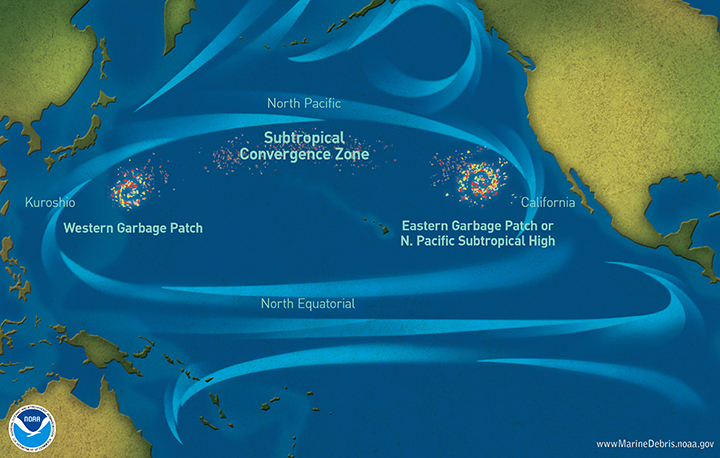NASA video shows the formation of garbage streams in the ocean over the past 35 years

Visualization helps to understand a lot. Dry figures and facts are good, but for a person, even an academician, it is easier to perceive visual information. NASA scientists who work at NASA SVS (Science Visualization Studio) understand this more than anyone else. These specialists have delighted us many times with various videos, and this time is no exception.
True, nothing much to rejoice in - the experts took detailed data on the debris flows in the ocean, and formed a very visual picture that allows us to understand what the ocean is now. The video model was created taking into account the movement of many ocean currents. The characteristics of the currents lead to the fact that in some regions real islands of garbage are formed, where everything that a person throws into the sea accumulates and floats in almost unchanged form for many years.
NASA created two models. The first one, called ECCO-2, models the movement of particles carried by surface currents. Scientists have shown the movement of these particles for 20 years. An interesting idea was presented by the animator Greg Schirach, as well as Horeis Mitchell. Experts decided to release particles into the ocean at one time (particles, dots on the screen - this is an analogue of real garbage, which is now floating in between the continents).
')
Animators have programmed the behavior of the particles in such a way that they disappear as they approach the shore. If a piece did not come close to the shore, it falls into the "trash island".
Initially, scientists decided to show only the dynamics of currents. But after one of the project initiators had the idea to model the behavior of garbage in water, the model did not have to be too complicated.
The second model is based on real data received from a number of scientific organizations. Over the past 35 years, one of the organizations, NOAA (National Oceanic and Atmospheric Administration), has monitored sea currents, their temperature and salinity. The authors of the project took all the available data, and loaded into their model of ocean currents.
The youtube video has been removed, so you can watch the video on the NASA website .
The result - chaotic streams of garbage after a certain time formed the very five garbage islands, which scientists so often talk about. Now, using this model, experts can study the dynamics of flows and debris in it, predicting the situation for years to come.
Source: https://habr.com/ru/post/383205/
All Articles